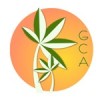Now that early spring is upon us, it's the season for many first time, and move-up, home buyers to look for a new home. And, just as housing is starting an upward rise in terms of pricing; lenders are implementing fees and add-ons making home mortgage loans more expensive to obtain than ever before. We are seeing fees for lender's costs rise by 2-3 percent of the loan amount, and in many cases, even more. We are going to utilize samples of both direct lenders and wholesaler lenders for assessing fees and add-ons in this review. We're using the sales price of $225,000, a loan amount of $217,125 (for meeting FHA's low down payment loan requirement), and we will not be naming specific firms. Our purchase price is based on average numbers for buying a home in the state of Florida.
For those interested in applying for an FHA loan, applicants' scores are required to be 580 or better to qualify for the lowest available down payment advantage, which is currently at 3.5 percent. However, most lenders will not provide financing with that low a score without some type of "add-on." Add-on refers to how the loan is priced to the consumer and for yield return to the lender. This has been a common practice by mortgage lenders for many years, not just since Dodd-Frank or since QM (Qualified Mortgages) came into the mortgage lending arena.
Using our scenario from paragraph one, our loan amount of $217,125 at a 4.250% interest rate equates to a monthly principal and interest (PI) payment of $1,068.12, and the monthly mortgage insurance premium (MIP) on this loan amount, down payment amount, and terms set by HUD is 135 basis points (bp). That equates to 1.35 percent of the loan amount and adds an additional monthly cost of $244.27. So, the total monthly payment (excluding homeowner’s insurance and real estate taxes) is $1,312.39.
Let's compare two situations with credit scores for the same loan and a lender who implements an add-on for a less than credit worthy borrower, another common occurrence. Assume the lender sets a minimum credit score of 680 or above, keeping in mind this is not a requirement from HUD (HUD insures FHA loans and sets MIP-they do not lend), as they will accept a score down to 580. This lender is only going to accept borrowers for the same type of loan at a minimum credit score of 680 before they start implementing an add-on. Our buyer has a credit score of 652. In order to obtain the loan with this credit score, the add-on is 0.5 percentage points. The borrower will pay $1,085.63 more (0.5% times $217,125) at closing for his lower credit score hit or the lender will charge him a higher interest rate in order to "cover" the shortage to the lender's yield. The 0.5 percent has to be made up somewhere and a higher interest rate works for covering that difference. The lender doesn't care if it's more cash at closing in a point structure or raising the rate – just so long as their yield requirements are met.
Now let's look at a "high risk area" mortgage loan scenario - all the same criteria again apply for this 652 credit score FHA loan, but now we look at how different states are considered more high risk areas by the lenders. You wouldn't know why a lender necessarily felt that a specific state is a higher risk, but there are "zones" in the U.S. where lenders consider the risk of default to be higher. Our lender adds an additional 0.125 percent, or $271.40 for our state, and our buyer does not have an additional $271.40 available to pay at closing. So again, he has to take a higher interest rate hit to cover the cost.
Next we'll look at the loan amount and its pricing. Again, all the same criteria, but now we address an add-on for the lower loan amount. With this particular lender, loan amounts for anything under $250,000 (another not uncommon occurrence), are charged a fee of 0.45 percent of the loan amount ($977.06). Again, our buyer does not have an additional $977.06 for closing, so he has to take another higher interest rate hit to cover this cost, too.
Grand total for all the add-ons with this lender for our borrower is an additional cost of $2,334.09, a hit of 1.075 percent of the loan amount. In order for the lender to receive these monies from the interest rate hit scenario versus the buyer paying the extra costs at closing means an interest rate increase from 4.25% to 4.75% - which is an increase in the monthly payment from $1,312.39 to $1,376.90. While this may not seem dramatic at first blush, under the new Qualified Mortgage rules, the buyer (borrower) may no longer qualify at this higher interest rate. And, we've not yet addressed the lender's closing costs and the other costs associated with acquiring the mortgage loan, which we will present in Part 2 of this post - Woe to the Buyer: Loan Closing Costs in 2014.
Benjamin Dona is the Broker and Owner of Gulf Coast Associates, Realtors in Bonita Springs, Florida. He holds two advanced degrees, an MBA and an MA, and has an extensive background in both business and marketing. In 1998, he founded Gulf Coast Associates, and formed a group of like-minded Realtor® associates dedicated to offering professional real estate services by concentrating on information, education and the use of leading edge technologies. He also is a recognized expert on the "Net," a much-quoted and read blog author, and a contributor to both national and international news outlets. Benjamin is a member of the National Association of Realtors, the Florida Association of Realtors, and numerous local real estate boards throughout Southwest Florida.
Contact Benjamin Dona at 239-948-3955
SouthwestFloridaRealEstateBlog.com








